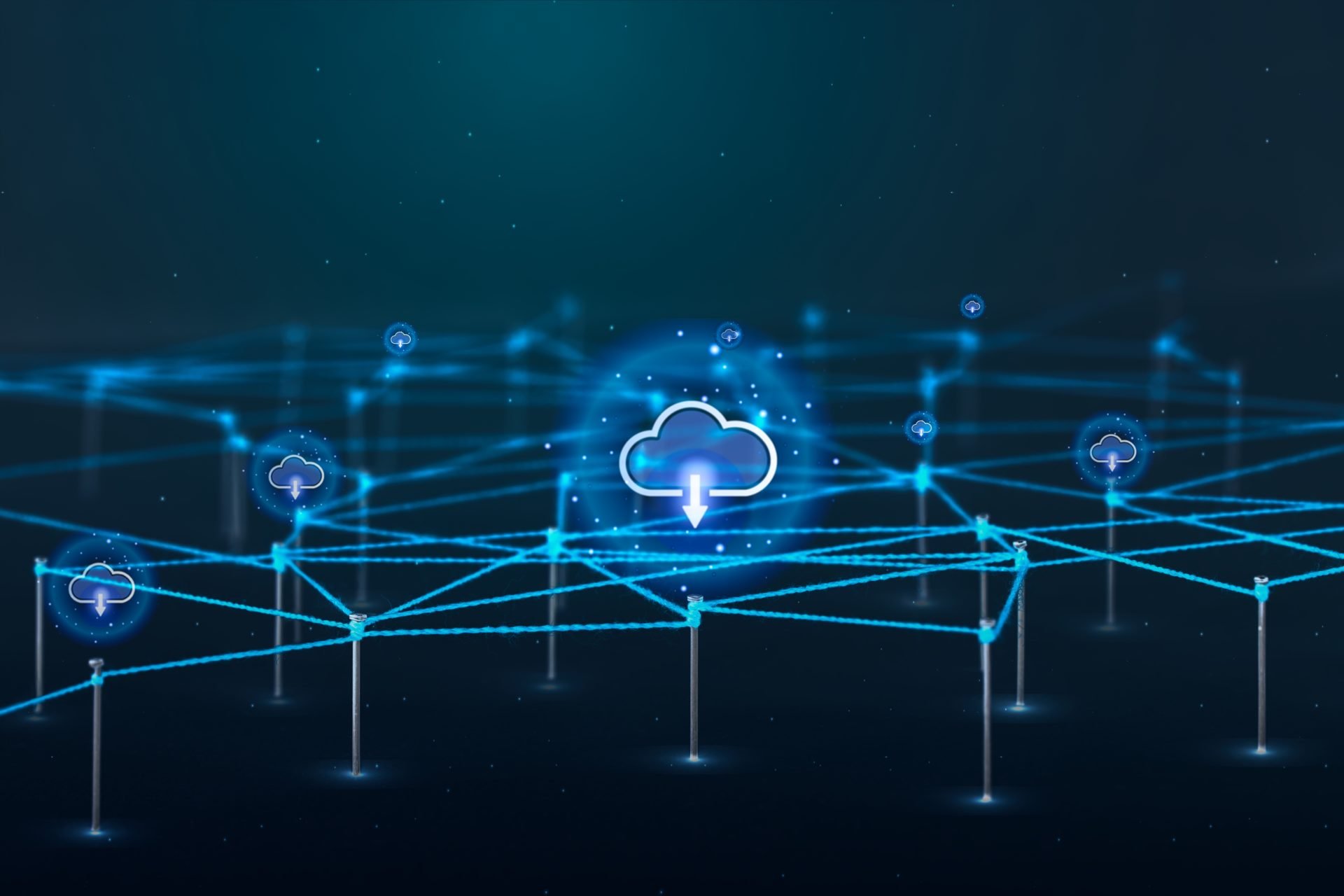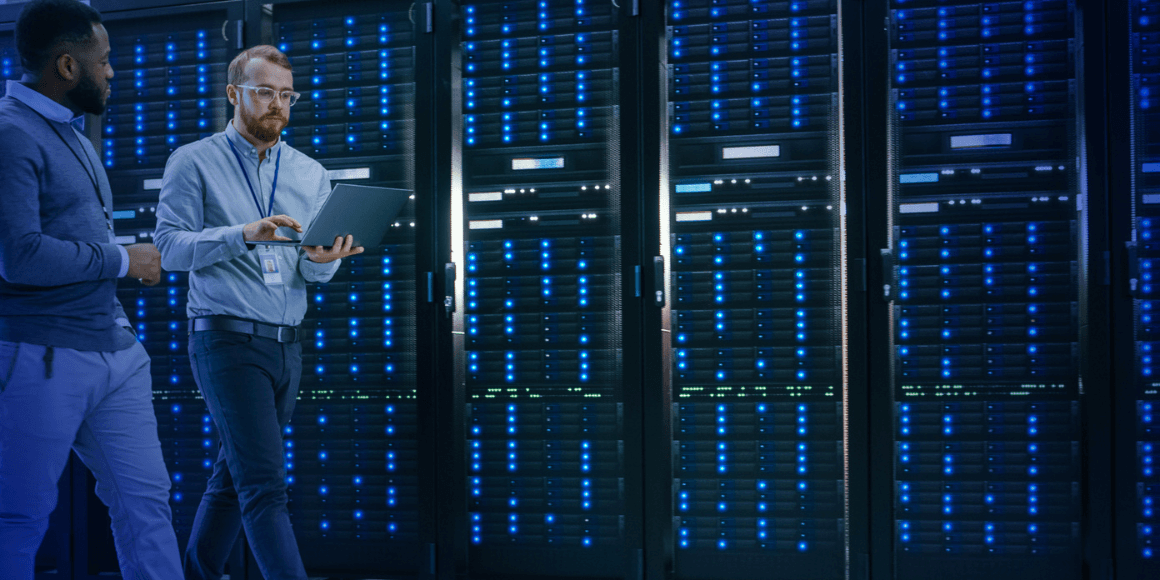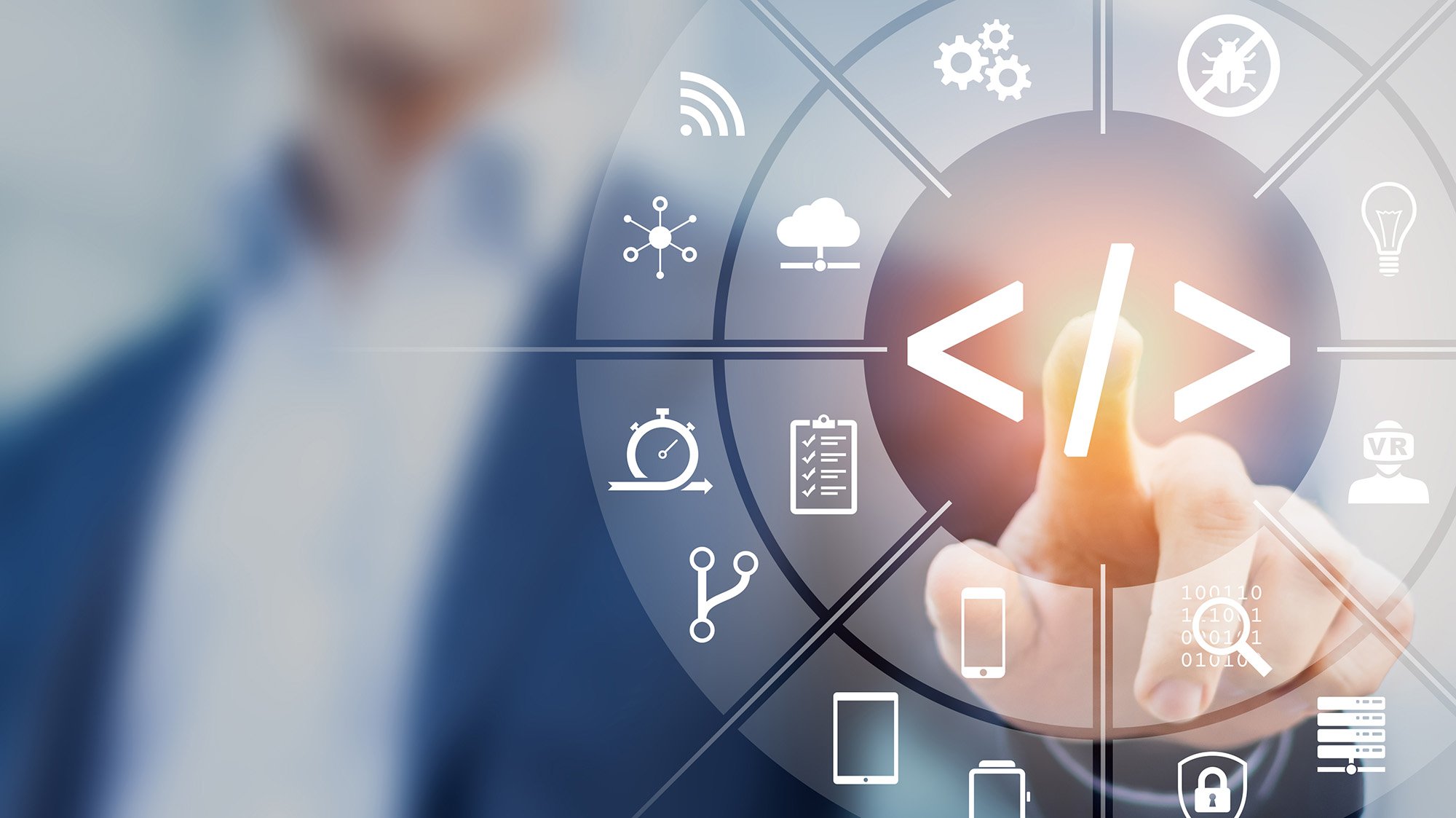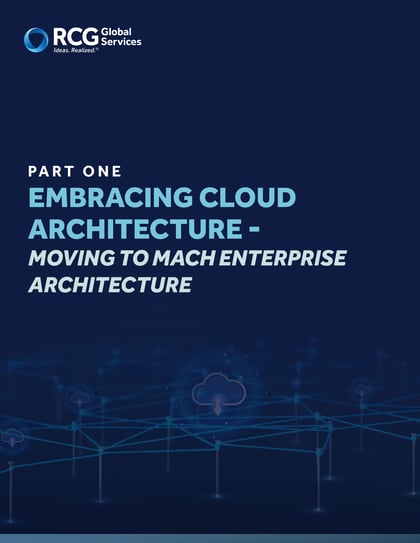Embracing Cloud Architecture: Moving to MACH Enterprise Architecture
So how do you complete a migration to the cloud that will support your expanding digital needs? It starts with understanding cloud architecture.
Modern Cloud Architecture Series

Simply moving existing legacy architecture onto the cloud “as is” can lead to the opposite of the desired result—a system that is inefficient, clunky, and expensive to run.
So how do you complete a migration to the cloud that will support your expanding digital needs? It starts with understanding cloud architecture.
Welcome to a four-part series on the importance of cloud architecture. Stay tuned as we will be releasing a new topic each quarter in 2022.
1 – MACH Enterprise Architecture
2 – Serverless Cloud Architecture
3 – Modern Cloud Data Platform Architecture
4 – MLOPs Cloud Architecture
Challenges with Migrating Legacy to the Cloud

Because they are tethered to each other, a single issue or change in code could end up breaking the entire system. In a “lift and shift” approach, businesses choose to simply replatform this coupled architecture in the cloud, rather than introduce new architecture meant for a cloud environment.
Attempting to use legacy architecture in the cloud can pose a variety of challenges:
- Difficult to maintain and keep up-to-date
- Previous issues on premises are carried over
- Getting new features to market is overly time-consuming
- A single change in code can impact the entire system
- Limited to third party architectures and configurations for purchased applications
- Unanticipated overuse of compute resources result in higher invoices than budgeted
- Not easy to plug in best of breed components into the solution architecture
Saying Goodbye to Your Core Platform

New, decoupled cloud architecture uses microservices to divide applications into a set of smaller, specialized components, giving developers the ability to work on different pieces in isolation without affecting the system as a whole.
Coupled vs. Decoupled Systems Architecture
Tightly Coupled Systems Architecture: A coupled, or “monolithic” architecture is a concept of system design and computing where every application’s components are linked together in such a manner that each component is dependent upon each other. Tightly coupled architecture promotes interdependent applications and code.
Decoupled Systems Architecture for Cloud: In a decoupled or “Loosely Coupled” design, components are independent, so changes in one component will not affect the operation of others. In the cloud, components are broken down into “microservices” which consists of a suite of small services, each with its unique codebase. Microservices use lightweight mechanisms (such as an application program interface or API) to communicate between the various services.
Digital is Driving the Case for Change

And the share of digital or digitally enabled products in their portfolios has accelerated by a shocking seven years.”
As customers and employees continue to demand enhanced virtual experiences, organizations are racing to offer more efficient, custom and personalized experiences to match their needs. To keep up with these demands, businesses need a flexible digital foundation that can support fast and frequent changes.
Agile & Flexible Solutions
In order to stay competitive, businesses need to increase their speed to market. This requires agile solutions that allow for continuous integration and fast deployment of new products and updates.
In an e-commerce environment, customers are looking for brands who can adapt to their changing needs fast. Tasks such as updating catalogs, improving payment options, or introducing a new mobile application, should be able to happen both quickly and frequently, without disrupting the entire system.
Best-of Breed-Technologies
Organizations who take a best-of-breed approach to building their tech stack are able to harness the power of today’s leading applications. In many cases, the ability to buy top products in specific application areas can save teams time and money building applications from scratch when it is not needed. The focus of best-of-breed applications is to do a single thing well, making them more robust, easier to implement, and tailored to the user’s experience.
Businesses still running legacy architecture are often left settling for ineffective components, rather than adopting best-of-breed, simply because they are coupled to the entire system.
What is MACH Architecture?

Contentstack defines MACH architecture as “a composable enterprise in which every component is pluggable, scalable, replaceable, and can be continuously improved through agile development to meet evolving business requirements."
Benefits of MACH Architecture
The biggest benefit of MACH architecture for ecommerce businesses is the agility it provides in responding quickly to customer needs, creating an improved (and competitive) customer experience.
Enables Agile CI/CD Delivery
Continuous integration (CI) and continuous delivery (CD) are a set of operating principles used by development teams to allow for frequent and reliable code changes. Decoupled architecture enables CI/CD, as it allows changes to be made to a single piece of the system without impacting the other services. The automated steps associated with the CI/CD practice free developers’ time to focus on other key business priorities, such as security, code quality, or higher-level business goals.
Modern Architecture for Cloud
Switching to MACH architecture enables a range of cloud services that otherwise wouldn’t be accessible. These services can help improve reliability and performance, help with scalability, and reduce cost.
Plug-and-Play Components
MACH’s headless architecture allows developers to swap components in and out without carry-on effects. For an ecommerce business, this could mean quick and frequent price changes, image updates, etc.
Improved Time to Market
The plug-and-play nature of MACH architecture allows for the easy integration of best-of-breed applications. This means rather than being pigeon holed into a single vendor, organizations can pick and choose the specific capabilities needed and connect them as a group of microservices. In addition, the decoupled components allow organizations to make changes and adjustments quickly and securely. This allows businesses to shift focus to innovation, send products to market quickly, and worry less about tweaks and adjustments they’ll need to make along the way.
Frictionless Customer Experiences
For ecommerce businesses, customer experience is a key area of focus. With the unprecedented acceleration of technology over the past few years, customers have come to expect top brands to deliver seamless and personalized omnichannel experiences. This means a consistent user experience across every single channel—allowing users to switch easily from desktop to mobile, for example, picking right up where they left off. This is all made possible in a headless API architecture approach, which allows for easy updates and integrations.
Considerations When Migrating to MACH

Digital Maturity
First, consider your company’s digital maturity. If your business is relatively new to digital transformation, take it slow and lay out a roadmap that won’t have you making too much change at once. Consider the learning curve your teams will face and ensure they are set up with the proper training and support required to be successful.
Project vs. Product Mindset
In a MACH architecture, your employees will need to move from a “project” to “product” mindset. While a project mindset focuses on activities completed in a certain period of time, a product mindset shifts the focus to long-term, business-wide goals.
Project Mindset
A Project Mindset is focused on the output. It requires estimating, timelines, schedules, and ultimately, delivery. Success is based on the ability to hit predetermined milestones.
Product Mindset
A Product Mindset is focused on the outcome. With the focus primarily on the overarching goal, specific timelines and tasks are not determined from the onset. Success is based on the ability to learn, adapt, and find solutions in close to real time.
Businesses who hold on to a project-focused mindset will have difficulty adapting quickly to customers’ ever-changing needs, while the flexibility of a product-focused business will result in faster time-to-market, lower costs, and strategic innovation.
Microservices & Agile Development

Because teams are able to hyperfocus on specific projects, they often result in faster, more successful outcomes. In a MACH architecture, microservices can work independently from one another, with no worry of a single change impacting the entire system. This means once your company has moved over to MACH, you can begin to embrace the benefits of Agile Development, as individual teams will now be able to focus on specific services.
Finding Partners & Vendors Who Support MACH

For many, curbside pickup, delivery, and mobile shopping applications are becoming the new normal. In the same way cloud architecture has adopted a decoupled, or headless model, ecommerce architecture has followed suit.
According to MuleSoft, headless commerce “enables a flexible deployment with decoupled layers of commerce services, scalability to pivot quickly, and the speed to make accelerated updates.” Through the development and use of APIs, brands are able to seamlessly integrate with other content management systems. One example, Salesforce Commerce Cloud, helps brands enable B2B and B2C experiences across multiple channels. If your organization is looking to expand your ecommerce, finding partners and vendors who support MACH architecture will be highly beneficial.
Enterprise Architecture & RCG

At RCG, we help organizations build scalable and versatile enterprise architectures that enable:
- increase revenue
- expansion into new markets
- improved customer experience
- improved data quality
To start, RCG lays out a phased approach in the form of a multi-month roadmap. The roadmap includes milestones and checkpoints for key areas, such as Cloud Platform and Trusted Data Foundation, Mobile Application Development, and Data and Analytics. At a high level, the approach involves building a scalable and future-proof modern data architecture, readying internal teams to be able to support the new architecture and process, and prioritizing units of work to meet immediate and strategic needs.
Download a PDF version of this ebook by filling out this form


